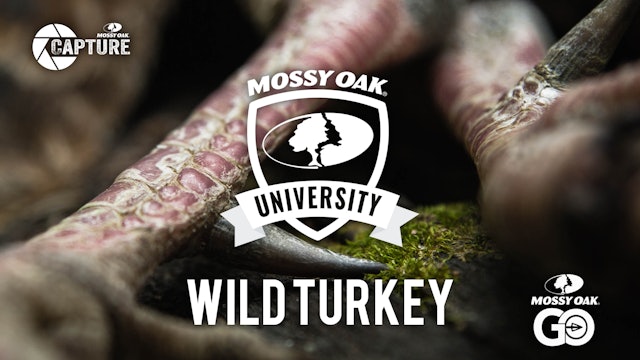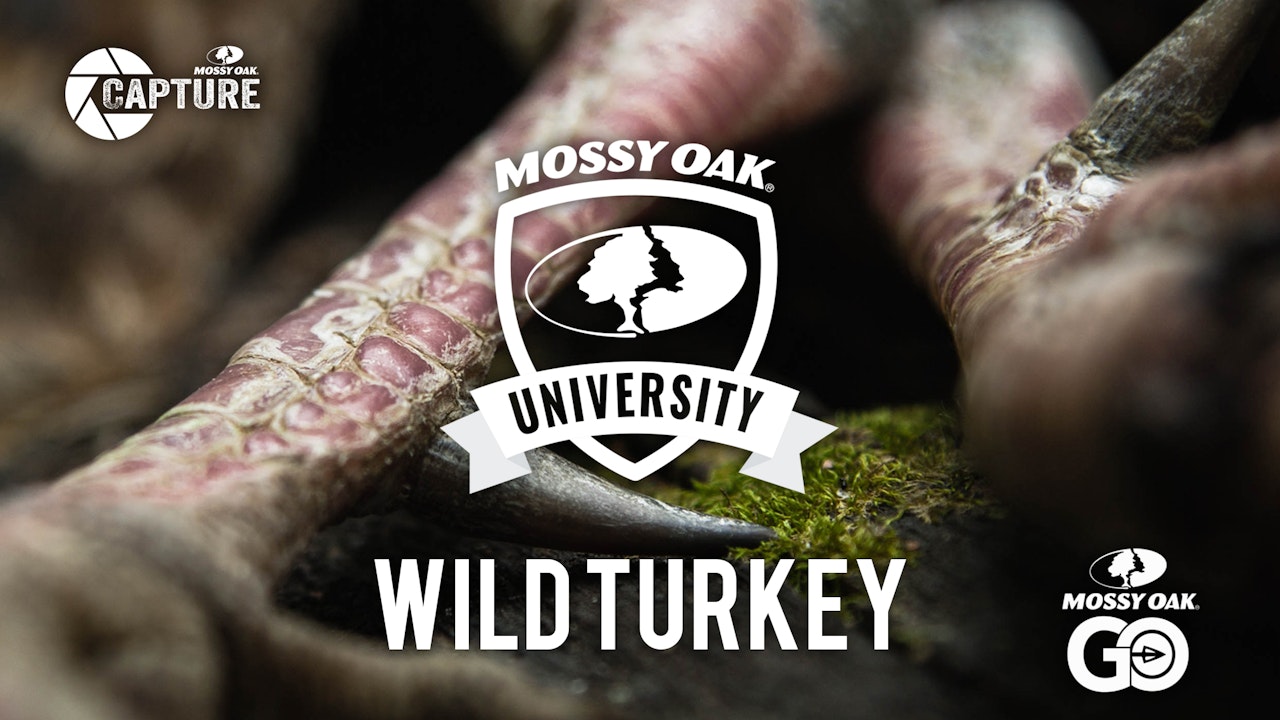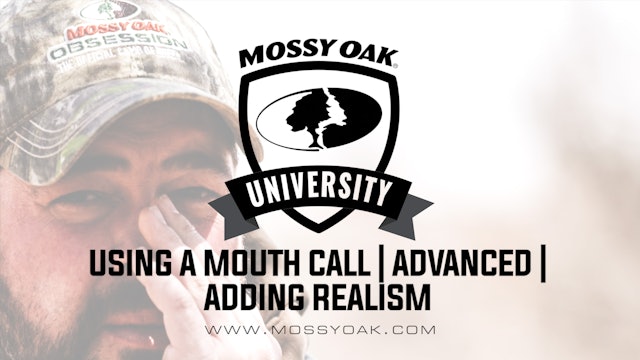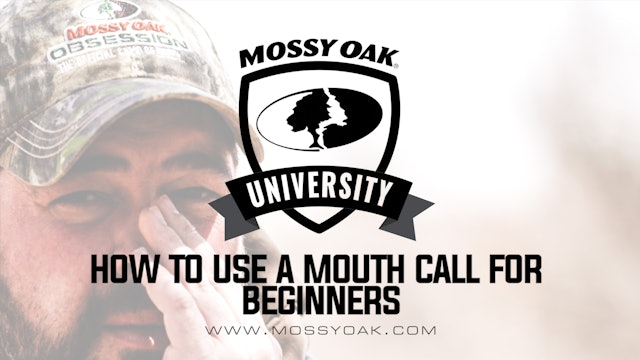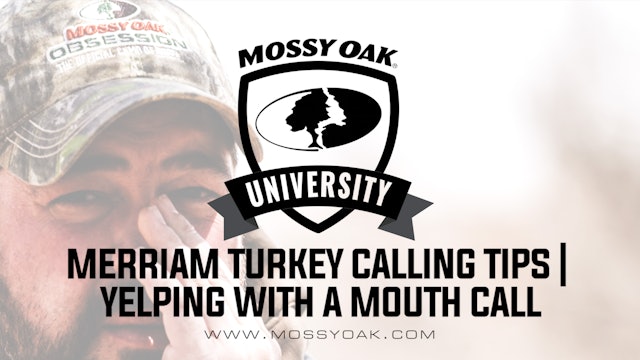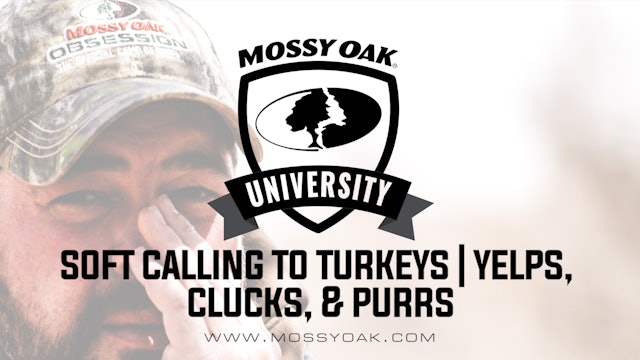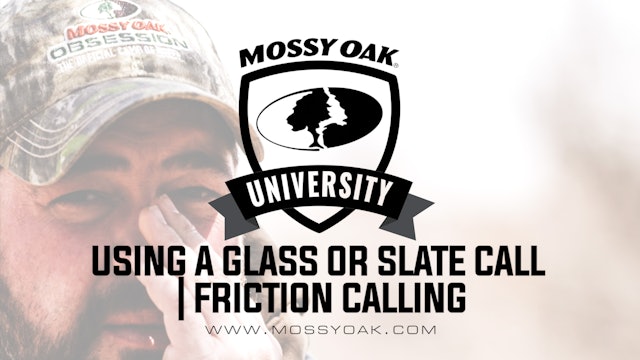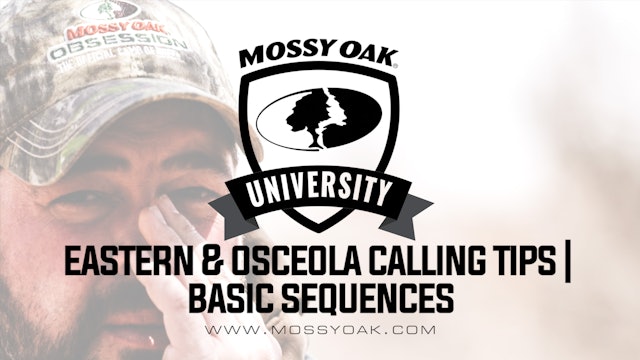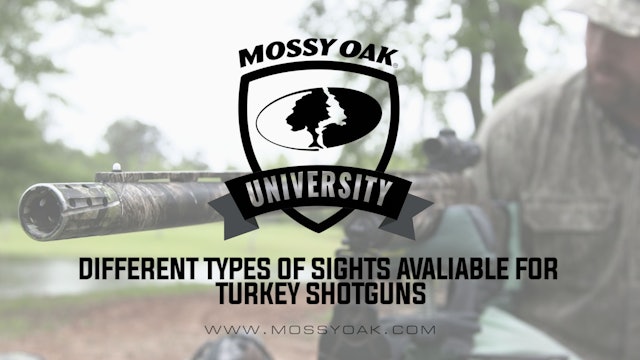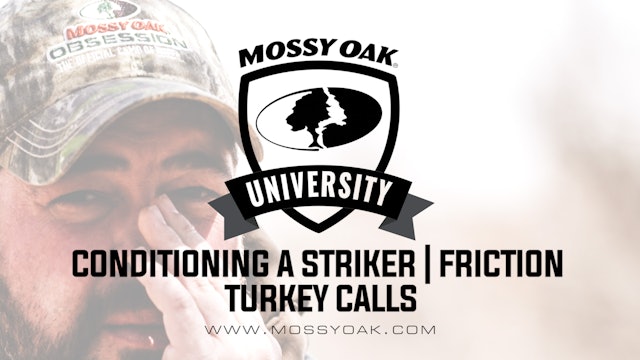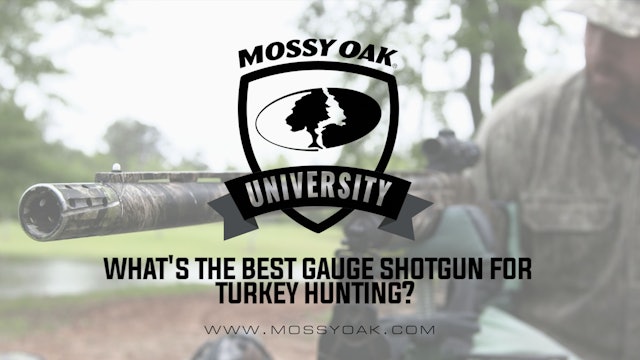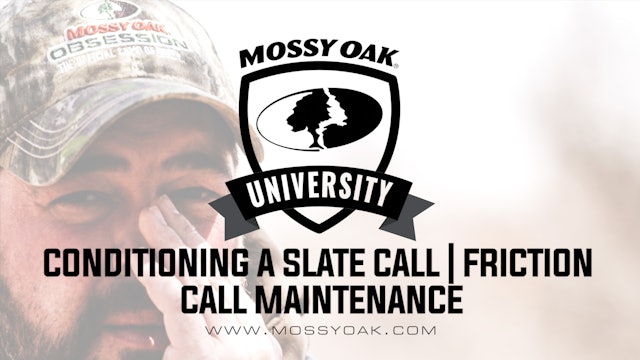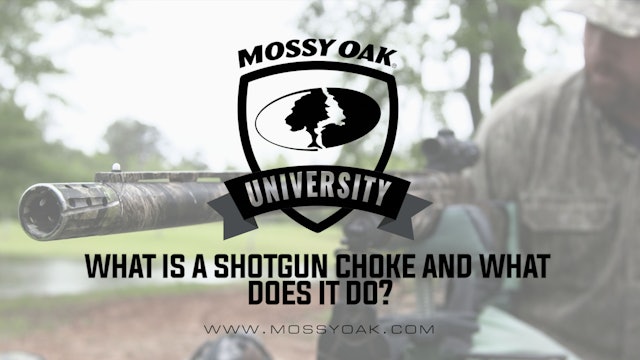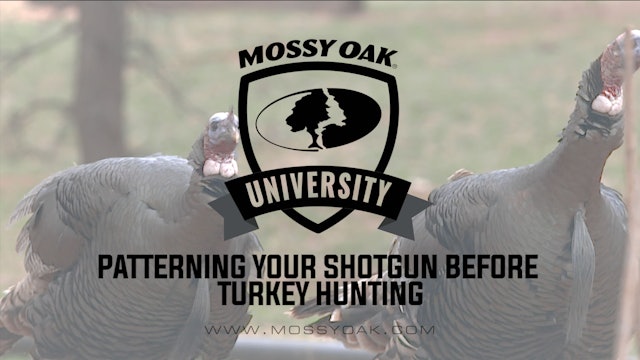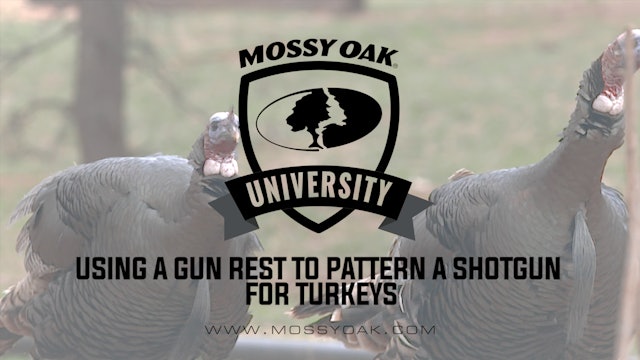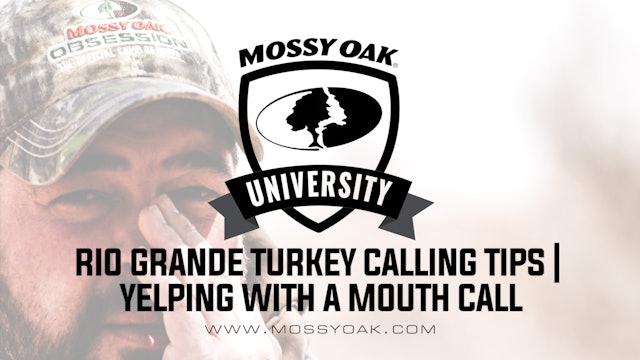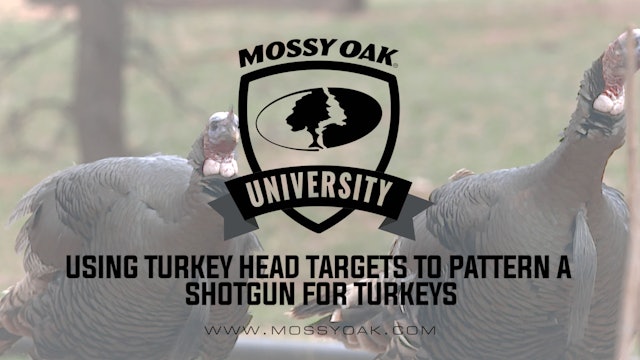Wild Turkey • Mossy Oak University
13 Seasons
Tips, tactics and How-To videos from hunting enthusiasts around the nation.
-
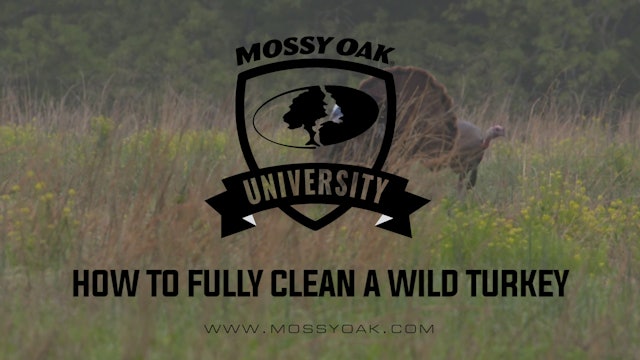 12:38Episode 1
12:38Episode 1How To Clean a Wild Turkey
Episode 1
Mossy Oak's Neill Haas show us how to properly clean a wild turkey.
-
How to Use a Mouth Call • Advanced • Adding Realism
Episode 2
Once you’re able to produce consistent sound with a mouth call, begin working on the variations of calls that wild turkeys make, clucks, cuts and yelps, for example. You want to be able to mimic the sounds a hen makes, which are varied in style and volume. Slight variations in your calling can ma...
-
How to Use a Mouth Turkey Call for Beginners
Episode 3
There are three parts to a diaphragm or mouth call: the tape, the frame and the latex reed. The mouth call goes in tape end first and reed facing outward. Rest the call on your tongue and press it to the roof of your mouth to create a seal with your palate. Pushing air through the call causes the...
-
Josh Grossenbacher Turkey Calling • Audio Sequence
Episode 4
Once you’re able to produce consistent sound with a mouth call, begin working on the variations of calls that wild turkeys make, clucks, cuts and yelps, for example. You want to be able to mimic the sounds a hen makes, which are varied in style and volume. Slight variations in your calling can ma...
-
Merriam Turkey Calling Tip • Yelping with a Mouth Call
Episode 5
Merriam’s hens don’t have as sharp of a cut as other subspecies of turkey hens. It’s more of a popping or pit sound. Listening to real Merriam’s hen calls helps identify the difference in their calls versus other subspecies. To produce the pit sound, Grossenbacher blows the air through the side o...
-
When to Soft Call to Turkeys • Yelps, Clucks, and Purrs
Episode 6
Once you have a turkey’s attention, you need to change your calling. Yelps, clucks and purrs with the soft calling technique can help coax the gobbler to come to you.
-
How to use a Glass or Slate Turkey Call • Beginner Friction Calls
Episode 7
Slate or pot style calls are a type of friction turkey call. It has two pieces, a slate or glass “pot” and a striker. Hold the striker like a pencil and flip the top end away so the striker is at an angle moving back towards you. Create a yelp by making a small circle, oval or diagonal motion wit...
-
Best Eastern and Osceola Wild Turkey Calling Tips • Basic Sequence
Episode 8
How to strike up a gobbler in different regions can vary. When trying to locate an Eastern, start yelping and build into cuts to try and pull the gobble out of the tom. Keep the series brief so you can listen for the gobbler’s return call. Osceola turkeys are very similar. Begin with hard, aggres...
-
Different Types of Sights Available for Turkey Shotguns
Episode 9
There are three basic types of sights for a shotgun. The open sight has a fiber optic front bead with a fiber optic rear trough. Line the front bead up with the rear sight and point it where you want it to go. It’s a very simple and very effective shotgun sight. The red dot sight has a glass reti...
-
How to Condition a Turkey Call Striker • Friction Call Maintenance
Episode 10
Keep your striker tip clear of any debris or dirt that may have built up on the tip. Some pot calls have a hole that serves just that purpose. If your call does not have a built-in striker cleaner, just take some sandpaper and sand off any build up. Taking care of your calls is important for crea...
-
What is the Best Gauge Shotgun for Turkey Hunting?
Episode 11
The main thing to consider when choosing a shotgun for turkey hunting is confidence. You want to go with a shotgun you’re comfortable shooting with the right choke and load. A 12-gauge may shoot further than a 20-gauge, but the 20-gauge has less recoil. There are several options for shotguns, and...
-
How to Condition a Slate Turkey Call • Friction Call Maintenance
Episode 12
You always want to make sure your call surface is conditioned properly for effective calling. On a slate surface, Scotch-Brite™ will remove moisture, oil or smoothness from the plate that may affect the striker movement and friction.
-
What is a Shotgun Choke and What Does it Do?
Episode 13
What is a choke? What does a choke do? It’s important to know what a choke is and does for your turkey hunting shotgun. Chokes simply screw into the end of the barrel of your shotgun. They come in a variety of sizes that determine how tight your pattern will be at certain distances. Shotgun patte...
-
Patterning your Shotgun Before Turkey Hunting
Episode 14
In order to have success on a turkey hunt, you must pattern your shotgun. Arguably the most important step as a turkey hunter is to know the range and best pattern for killing a turkey. The goal for patterning is to be on target, so sit and use a rest to keep the shotgun steady. Determine a good ...
-
Using a Gun Rest to Pattern a Shotgun for Turkeys
Episode 15
Just as you wouldn’t shoot off-hand to sight in a rifle, don’t do it with a shotgun. Use a good, stable rest and know exactly where you want the pattern to hit on the turkey target. Always use ear protection and eye protection when patterning your turkey gun, just as you would any other firearm.
-
What are the Best Shotgun Loads for Turkey Hunting?
Episode 16
The size and type of turkey load you use is really a personal preference. The main shell sizes are 2 ¾, 3 and 3 ½ inches and the size you use depends on the gun gauge. Lead pellets are the most popular and are available with copper-plating. Tungsten is a new option for turkey loads. It is a heavi...
-
Rio Grande Turkey Calling Tip • Yelping with a Mouth Call
Episode 17
Rios are less aggressive with hens than the Eastern and Osceola gobblers. To strike a Rio Grande, strictly yelp, both clear and raspy tones. Increase the volume of your calling to cover ground to try to pull the gobble out of the turkey.
-
 01:24Episode 18
01:24Episode 18What Is A Trumpet Call?
Episode 18
-
Using Turkey Head Targets to Pattern a Shotgun for Turkeys
Episode 19
Use an anatomically correct turkey target to practice aiming where to shoot a turkey. Where the skin and feathers meet – or the wattle – is where you want to aim on a turkey. Aim for 20 to 25 pellets in the wattle area. One pellet in the brain or spine will take a turkey down, so the more you hav...
-
 01:31Episode 20
01:31Episode 20Choosing a Trumpet Call
Episode 20
-
 01:00Episode 21
01:00Episode 21Trumpet Call vs. Wingbone Call
Episode 21
-
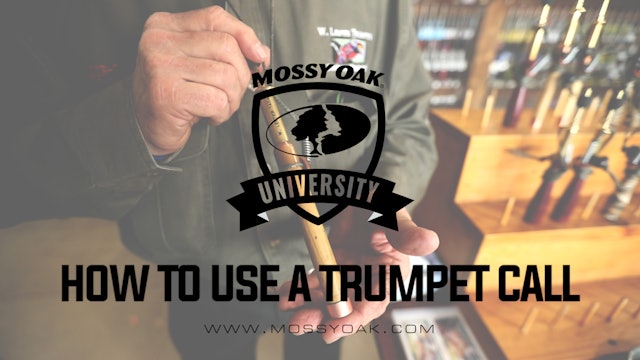 00:51Episode 22
00:51Episode 22How To Use A Trumpet Call
Episode 22
-
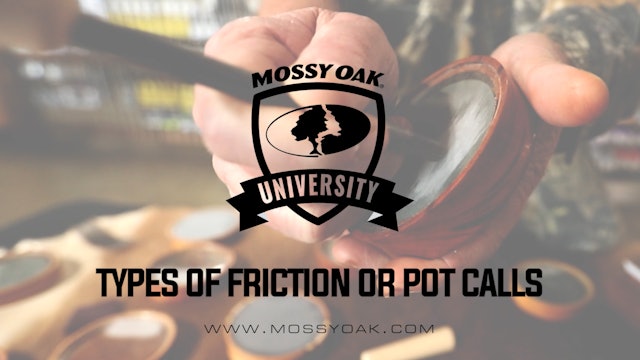 03:10Episode 23
03:10Episode 23Types of Friction Or Pot Calls
Episode 23
-
Conditioning Calls | Slate, Glass, And Crystal Surfaces
Episode 24

